
Бесплатный фрагмент - Journey to the East
Notes traveler. Part 1
India (GOA, Ponda, Karnataka)
This is my second trip to India, the first was four years ago and had a very different character. But step by step. I packed my clothers on gloomy December evening, I took a minimum of things with me in this trip. The departure was too late at night, flight time of about 7 and a half hours. I really sleep all the time and tired a little bit. We meet the morning in India. The plane lands at a military airport and minibase carry the sleepy tourists on hotels. An old bus on a bumpy narrow lanes of South GOA. Drive on left, trotation is not in sight, and it is unclear how one street manage to move buses, cars, motorbikes, cyclists and pedestrians! On top of that someone rapidly crosses the street, weaving between the counter flows. As noted by one of the tourists: “Driving in Moscow in comparison with a trip to GOA — it’s just kindergarten!”
The sleepy hotel welcomes tourists with flowers and smiles. Smile at everything — from bus driver to security guard and an administrator at the reception. Housing two-storey, reminiscent of buildings in colonial style. Everything is buried in flowers and greenery.
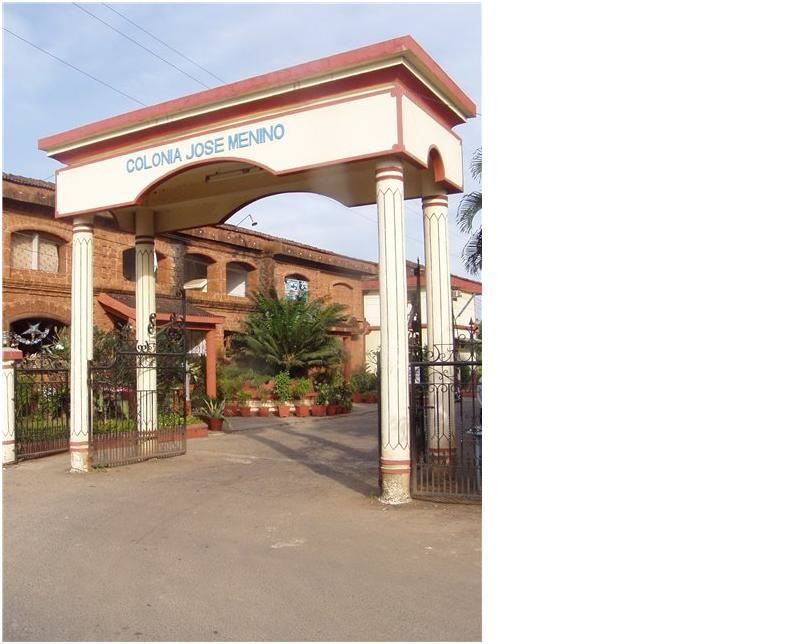
I quickly unpack and run to explore the area. The sea is very close, it is just two hundred metres. Geographically GOA by the Arabian sea, but because it is open source, it is assumed that to the white beaches of roll waves of the Indian ocean. The sand is white and very fine, it crunches under your feet as starch!
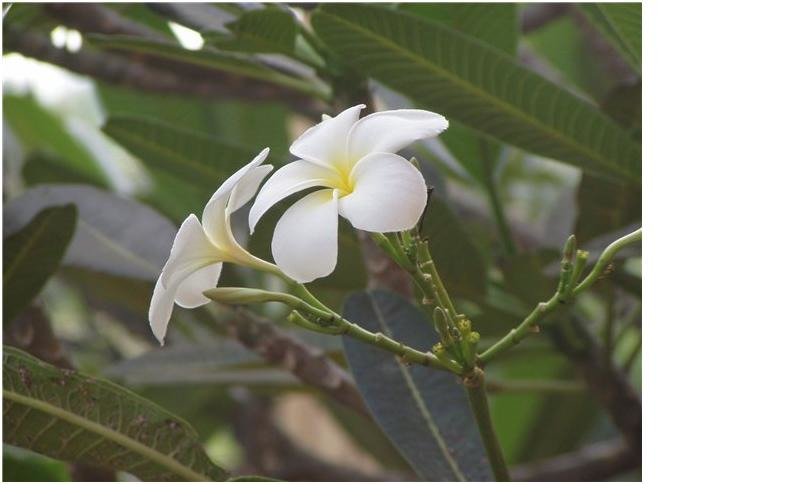
And near a piece of real jungle!
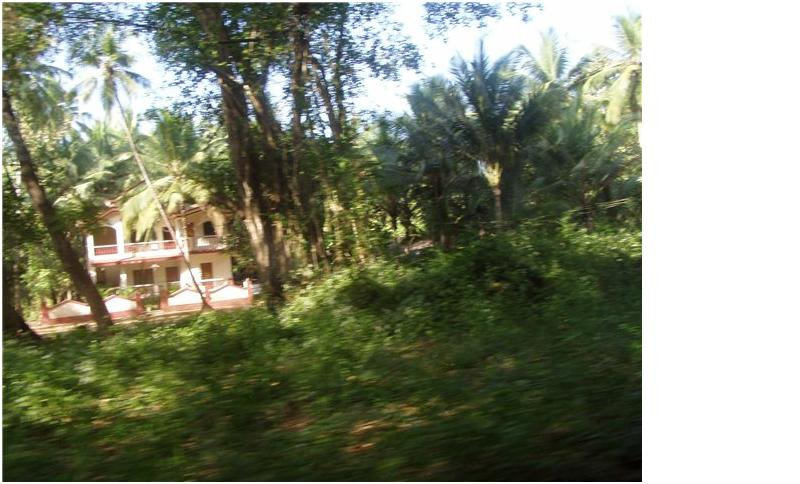
The first tour — the temples of old GOA and Panaji, and then visited the spice plantations. We leave early in the morning, still not hot and the breeze gently rustling through the leaves of coconut palms.
The nearest major town is Margao, here you can find the train station, which has trains going in other States — the pond and Kerala. India is a multiethnic and multilingual country. There are more than 200 languages, of which 86 — state. Children in school must learn four languages, including Hindi and English. The other two languages are the languages of this state and County. Passing the block buildings is the first multi-storeyed home.
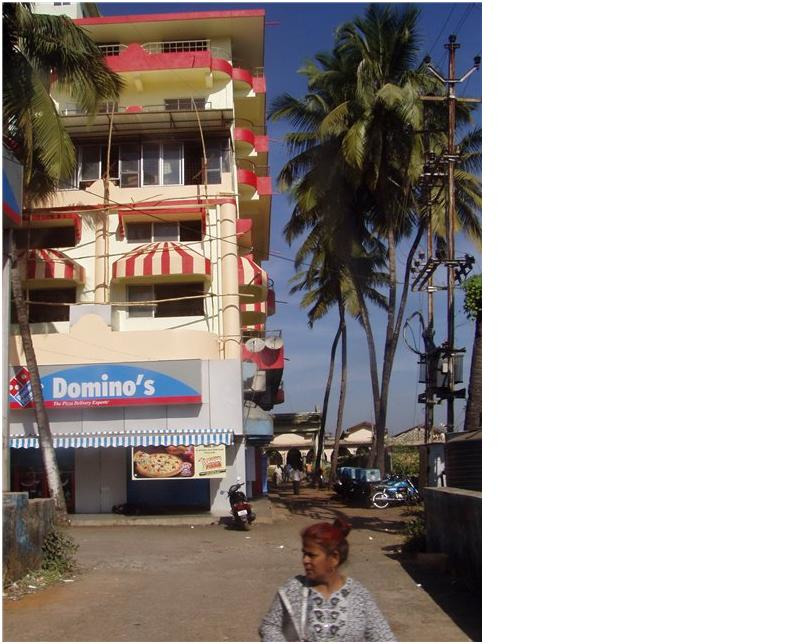
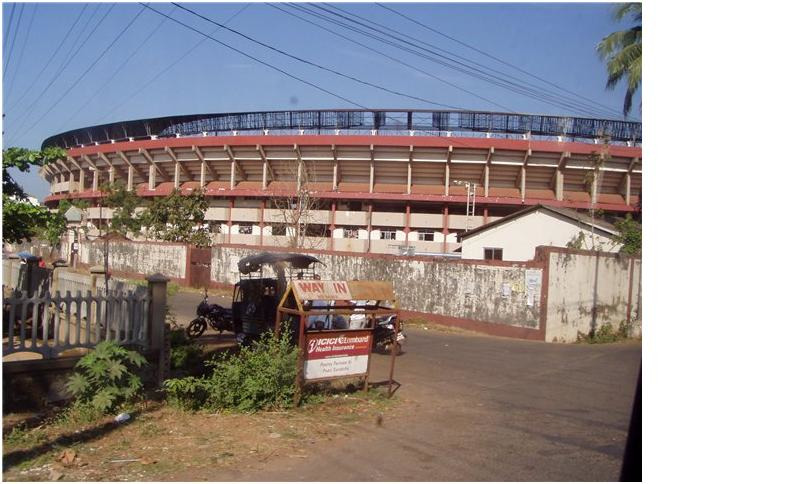
First stop — the current Hindu temple of Mahalsa. The entrance to the temple.
In the temple are many buildings. Including a mandatory element of any Hindu temple is a light tower. Edge it facilities for pilgrims, of which there are a great many.
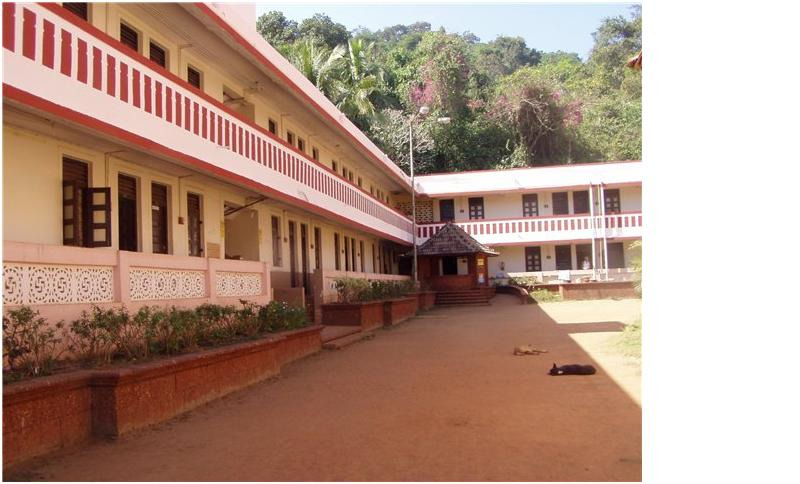
Light tower (completely hollow inside) — got its name due to the fact that inside each window the candle is lit. And in the dark looks like a huge light pole, woven from a variety of lights.
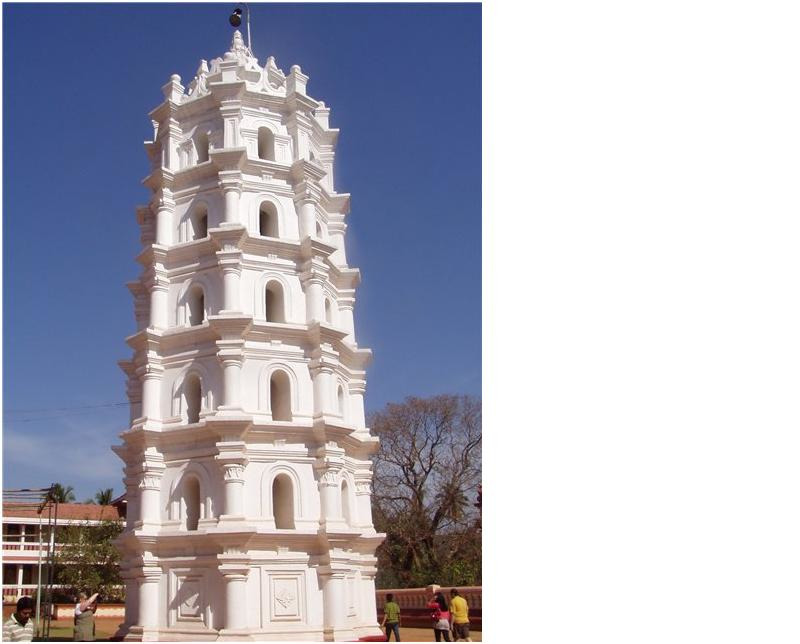
The temple is valid, i.e. it holds regular services. And pilgrims come here from all States and can spend from several days to several weeks.
The entrance inside the temple is permitted only without shoes. In a pinch you can log in to the socks, the shoes on special reserve shelves in the street. Nearly every temple has a pond for ablutions. At the entrance to the temple sold flower garlands, fruits, flowers Lotus. You cannot come to the temple without offerings! You give the brahmin brought gifts, and always with the right hand, the same hand he fills you with Holy water.
Sale of flowers and fruits at the entrance to the temple. By the way, in Karnataka, there are special fields where they cultivate flowers for decoration of homes and temples. Blossoms strung on a thread and make yellow-orange garlands.
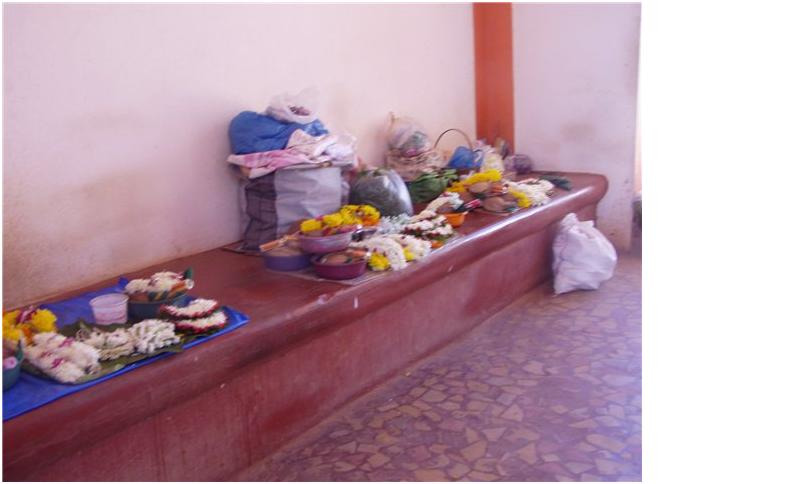
Amulets in the form of Ganesha, he of the elephant head. Can’t resist from buying the shells in your collection.
Leave the sun temple of Mahalsa and go to the plantation for growing spices. At the entrance visitors are greeted dancing girls in national costumes, are like exotic flowers or little birds of Paradise.
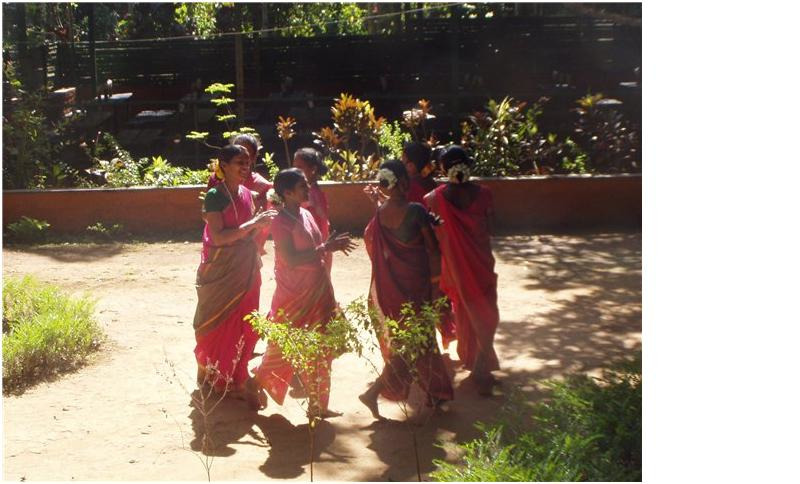
On plantations cultivated a huge amount of spices. The total area planted over 150 hectares, tourists spend only a dedicated parts and show how to grow vanilla and cocoa, cashew nuts and coffee, cloves and curry. Indians use many spices in cooking. The most important national dish Fish carry and rise prepared using a mixture of curry and many other spices (massala carry). In India even there is a special kind of tea Massala tea, i.e. tea with spices. In combination with honey this tea is very quickly helps to get rid of a cold!
Before you explore the plantations, tourists will have the fruit breakfast.
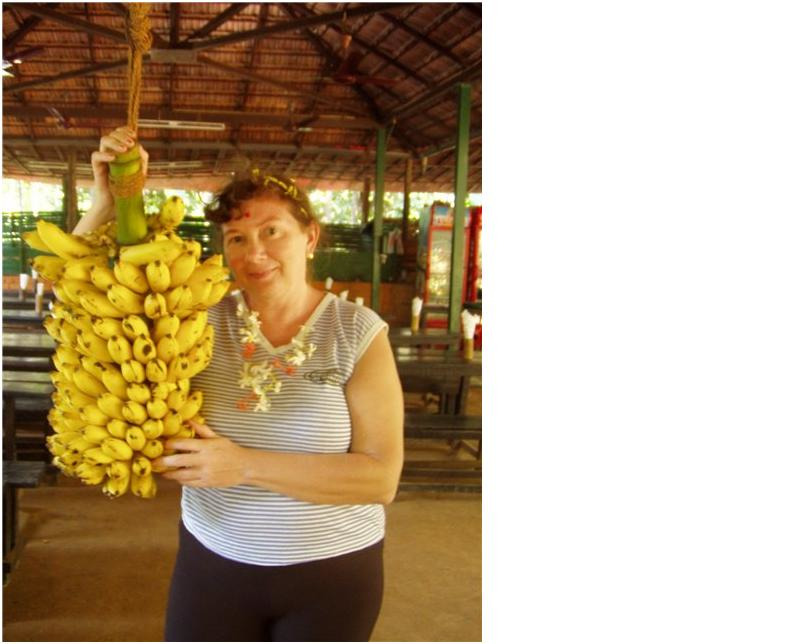
The plantation is a real kingdom of vegetation, various paints, colors and smells!
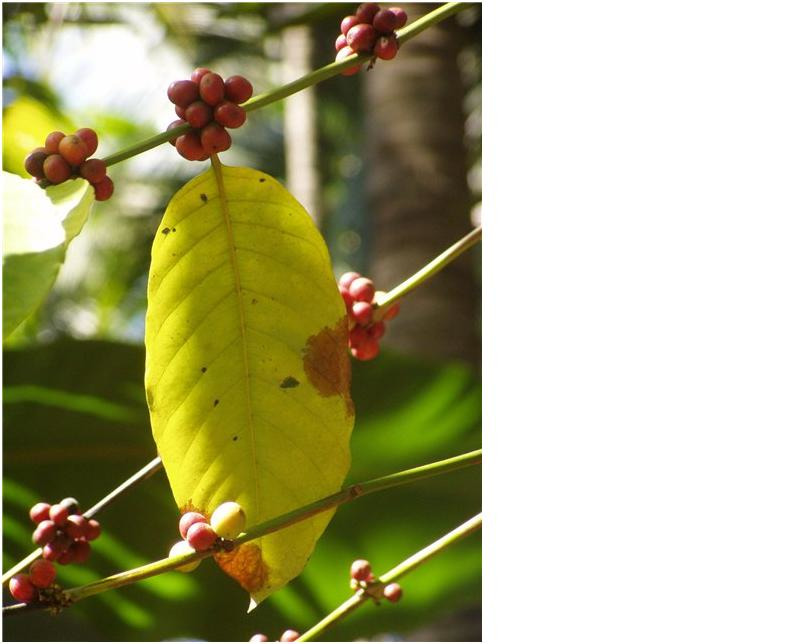
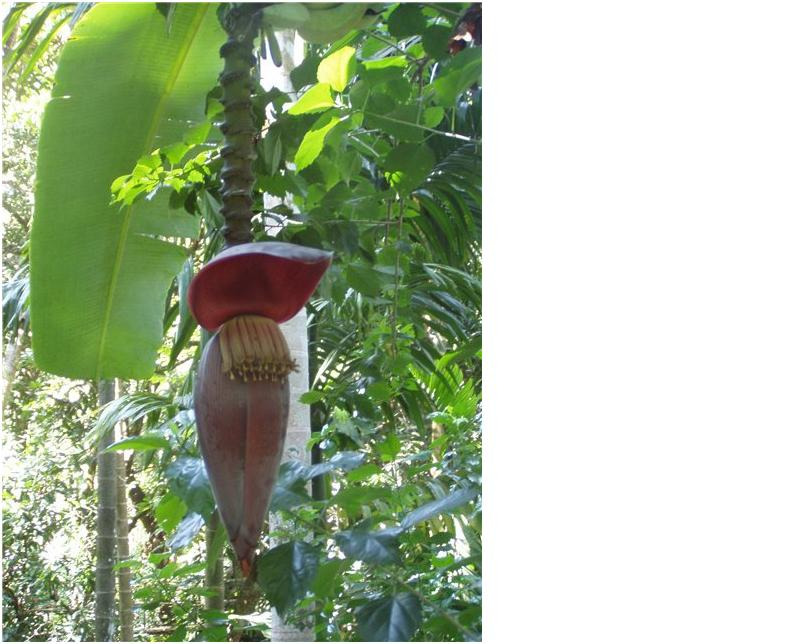
There are 5 themselves expensive spices – saffron, vanilla, cloves, cinnamon and koreandr. All of the above spices grown in India except the saffron — climate not suitable for growing this plant. But the flowers of vanilla are pollinated by hand — pollination of work on women and children. The fact that the plant was imported into India and successfully caught it, but the insects involved in pollination are not available. So we have hard-working Indian women to do it with her own delicate hands.
After the tour our guide offers tourists to ride on elephants. Indian elephants are not as friendly as Thai, so the driver is always next to you. Adult elephants saw off the ends of the tusks in order to avoid possible misunderstandings.
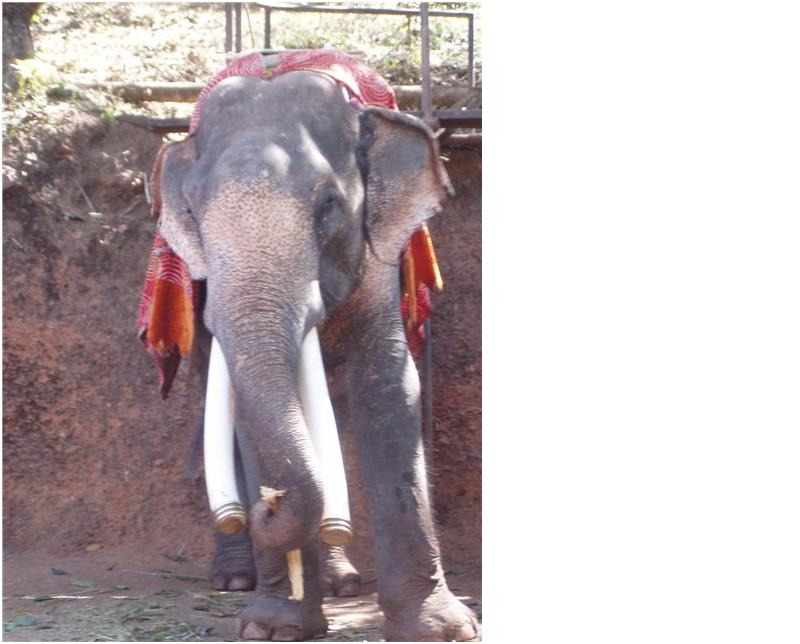
And small elephant was happy to play with tourists, for it’s all new. Smiling baby all buy bananas and other goodies. Daredevils climb the elephant on the back. The mighty giant that doesn’t always causes only positive emotions!
By the way, on the plantation, organized a complex system of irrigation. Water for irrigation is taken from local rivers, which allotted a number of channels. Along the channels grows a great variety of exotic plants.
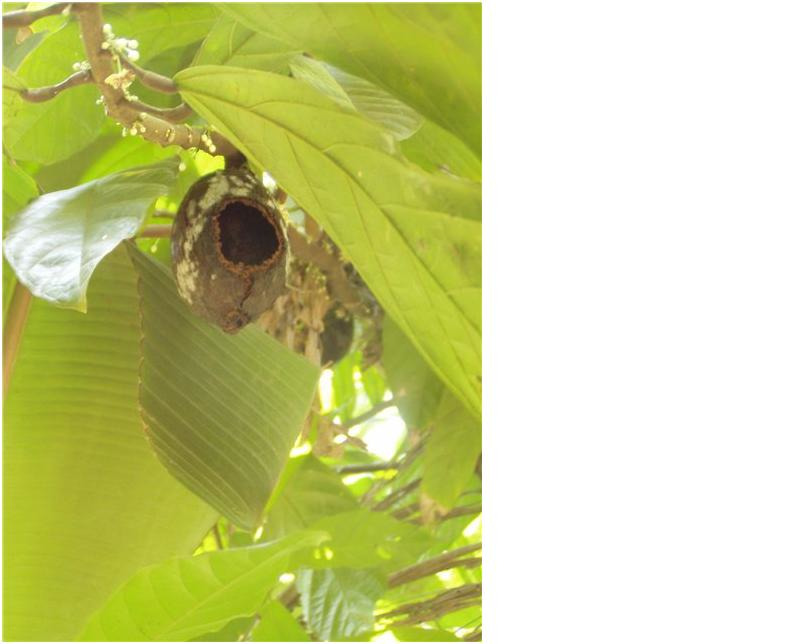
Here and there grow orchids and other beautiful flowers is amazing!
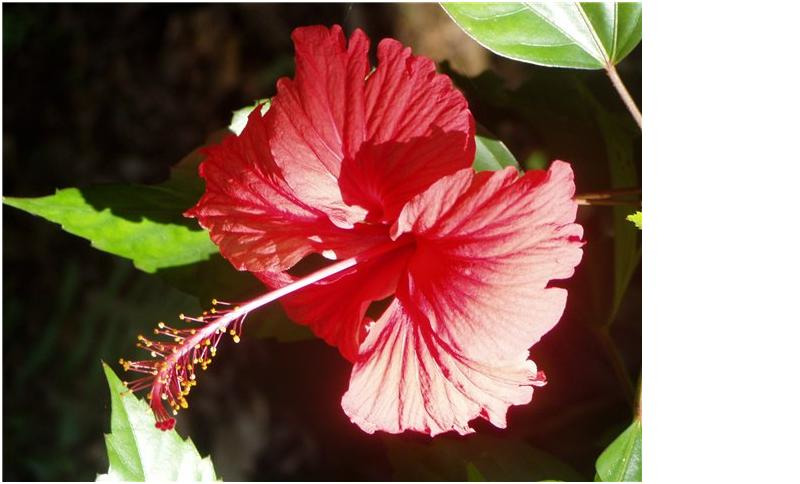
Here’s you can see how the local people to collect coconuts — they climb the palm tree without any devices, apart from the strap on his feet. Don’t have time to blink an eye — Indian already upstairs and quickly goes down. Everybody can try to do it by themselves! The audience enthusiastically watching the awkward attempts of tourists to climb a palm tree! At the end of the presentation, you can bathe the elephant in the river. Literally “To wash his back”! Tropical vegetation remind me of the Rudyard Kipling “Mowgli”, “Riki Tiki Tavi”. By the way, in India every year from poisonous snake bites kills more than 20 thousand people. If you somewhere late at night, not be amiss to take a flashlight and shine at your feet. The walk through the plantation ends and our path lies in old GOA and Panago. Our tour continues. We drive to old GOA — the capital of the state, known as “little Lisbon”. It was founded in 1510 by Sultan Adil Shak. In general, the state of GOA for many years was a Portuguese colony that have left their mark on everything from the city architecture and street names, to the names of local residents. The name of our guide was also Portuguese. You will visit the two main attractions of old GOA — the Cathedral of St. Catherine and Church of the Merciful Jesus, where the relics of Francis Xavier. View of the Cathedral of St. Catherine is the largest Christian Church in Asia.
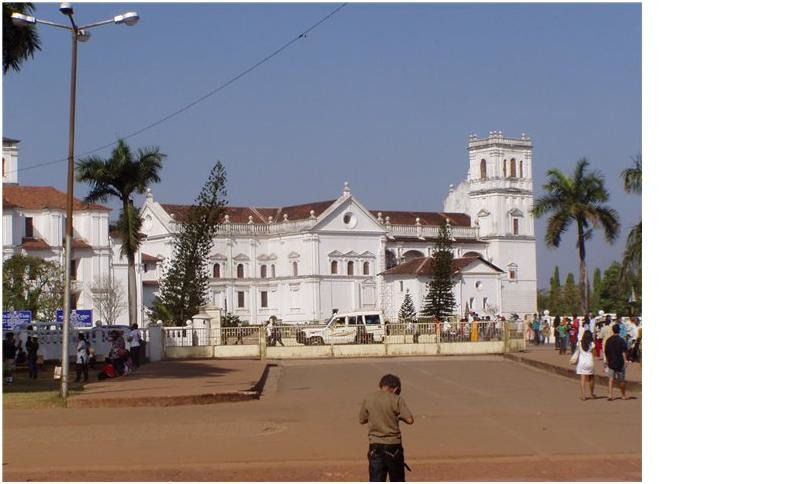
The first thing you will see inside the Church of the Merciful Jesus is the image of St. Francisco.
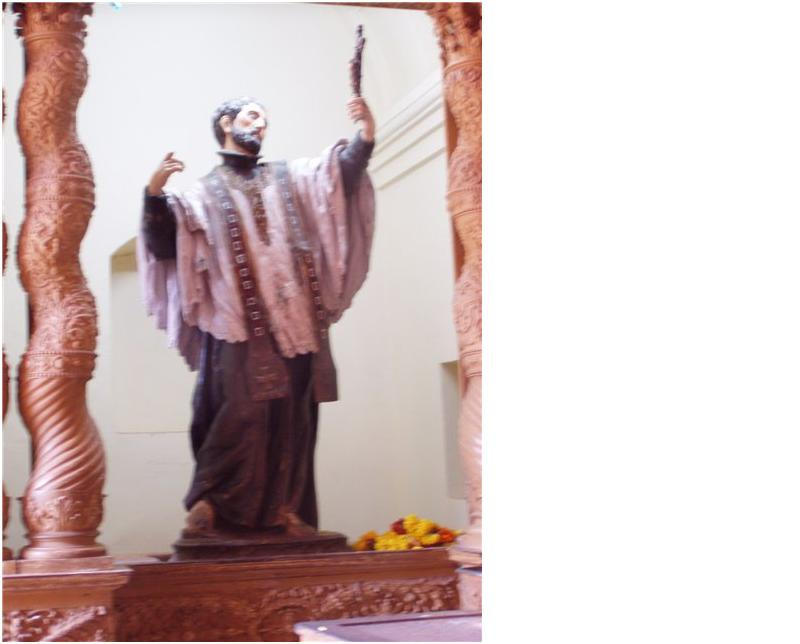
From Wikipedia:
Francis Xavier hails from an aristocratic Basque family of Navarre. He was born in the castle of Javier (Navarre, Spain) on 7 April 1506. In 1512 Castile invaded Navarre. Many castles were ruined, including his family castle, and land was confiscated. Father Francis died in 1515. At the age of 19, Francis Xavier went to study at Paris University, where he received a bachelor’s degree in 1530. He continued to study theology and became acquainted with Ignatius Loyola. On 15 August 1534, in a Montmartre chapel of Ignatius Loyola, together with Francis Xavier, Peter Faber, Jacob Laínez, Alfonso Salmeron, Alphonse Nicholas Bobadilla and Simon Rodriguez took an oath to dedicate their lives to God. This was the basis of the society of Jesus. Francis Xavier devoted much of his life missions in distant countries. In 1541 Pope Paul III sent him into Portuguese East India. Francis Xavier left Lisbon on 7 April 1541 along with two other Jesuits and the new Viceroy Martin de Sousa, on Board the Santiago. From August this year until March 1542, he is in Mozambique, and on 6 may 1542 he arrived in Goa, capital of Portuguese India. The official title of the position of Francis in Goa was “Apostolic Nuncio”. The center of missionary activities of Francis Xavier in the first three years of his activity was the Indian city of Goa, whence he made numerous trips across South India and the neighbouring countries. September 20, 1542, he began his mission among the people of paravas, pearl fishers on the East coast of South India. Then he helped the conversion to Christianity of the king of Travancore on the West coast of India, and also visited Ceylon. In 1545, he decided to move the missionary activity of the East to the Moluccas (now Indonesia). After arriving in Malacca in October of 1545 years and three months in vain waiting for the ship to Makassar, he decided to change the purpose of his journey. January 1, 1546, he left Malacca and went to the island of Ambon, where he remained until the middle of June. He then visited other Molucca Islands of the archipelago. After that, he returned to Ambon island and then to Malacca. In December 1547, in Malacca, Francis Xavier met a Japanese from Kagoshima named Anjiro. Anjiro heard of Francis in 1545 and went on a trip from Kagoshima to Malacca specifically to meet him. After their acquaintance, Francis decided to go to Japan. He returned to India in January 1548. The following fifteen months were devoted to various journeys and administrative Affairs in India. Francis Xavier was extremely disappointed non-Christian life and behaviour of the Portuguese which impeded his work in evangelising the local people. He went further, to the unknown far East. On 15 April 1549, he left Goa again visited Malacca, and arrived in Canton. In the journey he was accompanied by Anjiro, two other Japanese, and the father of Cosme de Torres and brother Juan Fernandez. He brought gifts for the “King of Japan”, which was intended to be submitted to the Apostolic Nuncio. Xavier arrived in Japan on 15 August 1549. He went ashore at Kagoshima, the main port of the province of Satsuma (Kyushu island). He was warmly received and remained the guest of Anjiro family until October 1550. From October to December 1550, he lived in Yamaguchi. Shortly after Christmas he went to Kyoto, but he fails to see the Emperor. In March 1551 he returned to Yamaguchi. Here he was allowed to preach in front of the daimyo, but since he knew the Japanese language, he was forced to confine itself to reading aloud the translation of the catechism. A monument to St. Francis Xavier, Hirado, Nagasaki, Japan In the end, it more than a two-year mission in Japan was successful. In hirado, Yamaguchi and Bungo formed Christian community. He decided to return to India. During the trip, a storm forced the ship to stop on an island near Guangzhou, China. There he met a rich merchant Diego Pereira, an old friend in India, who showed him a letter from one of the Portuguese, who were detained in Guangzhou. The prisoner asked the Portuguese Ambassador to intercede for him before the Chinese Emperor. On December 27, 1551, the ship Francis with stops in Malacca, and in January 1552 arrives back in Goa. On 17 April he again went to the path, together with Diego Pereira, who acted as the Ambassador of the king of Portugal, on Board the ship “Santa Cruz”. This time his target is China. However, he discovered that he forgot his letters of credence. Therefore, in Malacca he had a conflict with captain Alvaro de Ataide de Gama, who by that time had complete authority in the Harbor. “Captain” refused to recognize his title of Nuncio and demanded that Pereiro to waive the title of Ambassador, to hire a new crew for the ship and to leave gifts to the Emperor in Melaka. In early September 1552, “Santa Cruz” reached the Chinese island of Sanchuan (Shangchuan), 10 km from the southern coast of mainland China (modern County Taishan County Jiangmen), 200 km South-West from the place where later would arise the Kong. In those years (before the establishment of Macau) this island was the only place in China that is regularly allowed to attend to the Europeans, and then only for seasonal trade. At this time Francis was a student of a Jesuit Alvaro Ferreira, a Chinese man Antonio and a servant from the Malabar Christopher. In mid-November he sent a letter in which he wrote that one man had agreed to deliver it to the mainland for a large sum of money. Having sent back álvaro Ferreira, Francis was left with only Antonio On November 21, he fainted after mass. He died on the island December 2, 1552, at age 46, having failed to reach mainland China. At first he was buried on the island. In February 1553, his body was taken from the island of Sanchuan and 22 March 1553 temporarily buried in St. Paul’s Church in Malacca. April 15, 1553 Pereira came back from Goa, brought the body to his home. On 11 December 1553, the body of Xavier was transferred to Goa, where it is today. Every 10 years for 6 weeks of his incorrupt body on display for all to see (last time this happened in 2004). There are different opinions about how the body may remain incorrupt for such a long time. Some believe that his body was embalmed; others insist that this is evidence of a miracle. Tomb Of St. Francisca. Every year in old GOA attracts thousands of pilgrims to venerate the Saint. Some more photos from the Cathedral of St. Francisco.
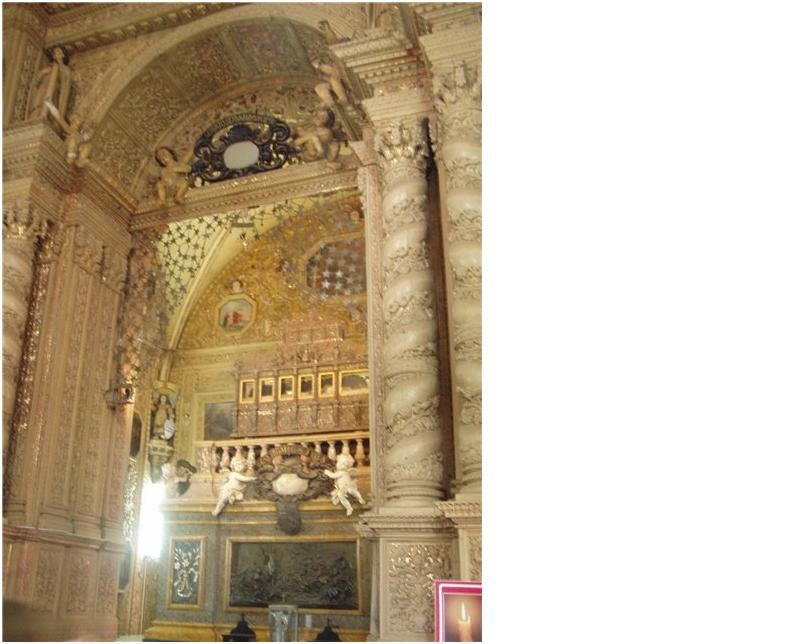
Courtyard decorated with a fountain.
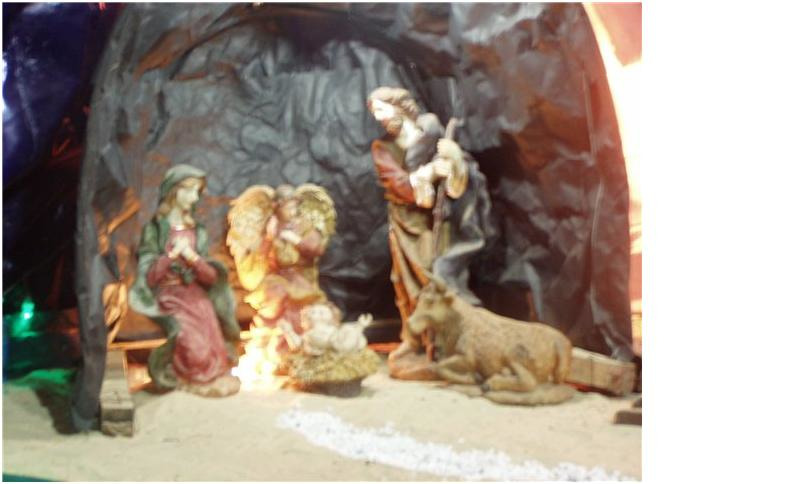
View of the Cathedral from the outside — a monumental sight!
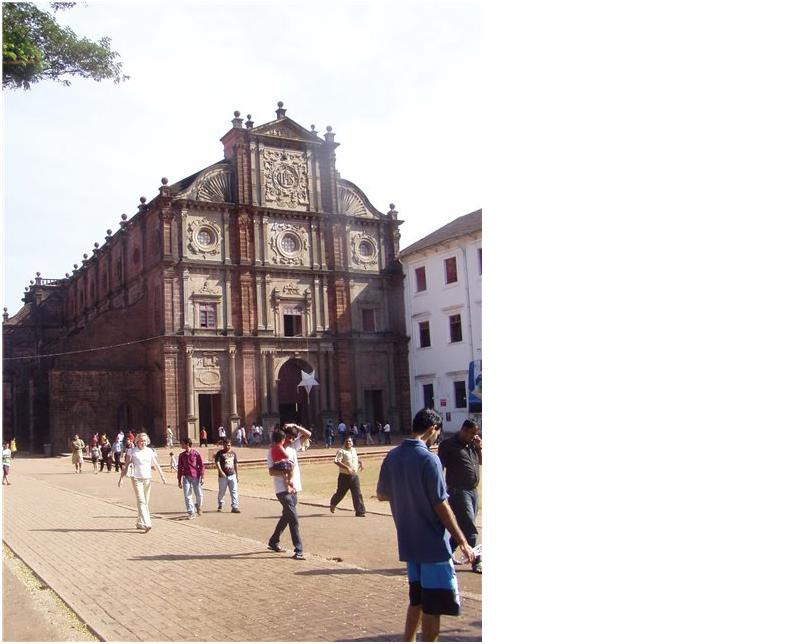
On the contrary, on the other side of the square stands the Cathedral of St. Catherine. On 25 November 1510 on the day of worship Holy. Catherine’s Portuguese commander Alfonso De Albuquerque defeated the Muslim armies Goa and passed through the gates into the city as the new master of these lands. Now the gates is a chapel of St. Catherine, and was laid near the Church. Catherine, which later was constantly reinforced and rebuilt. The Cathedral we see now was built almost 75 years, ending in 1631 its Length is 76 m, width 55 m, height 37 m. After the destruction of the Church and monastery of St. Augustine in 1939, who was also in Goa, the Cathedral of St. Catherine became the largest in the parameters among Catholic cathedrals in Asia. In architectural terms, is a Portuguese Gothic. And built his Portuguese and Italian architects, as well as all the churches of Old Goa. Initially the sides of the front of the Cathedral there were 2 towers. But in 1775, one partially collapsed due to the hurricane. In the bell tower the second tower is the famous “Golden bell”, named so because of the addition of the gold during casting to improve the sound. The exterior is half Tuscan and half Doric order (style). These orders were born in the Aegean and was the styles of architecture of Ancient Greece and Ancient Rome. The main altar dedicated to St. Catherine from Alexandria in Egypt. On it scenes from her life. For example, you can see the scene of the adoption of Christianity. In addition to the main altar in the Cathedral. Catherine there are 6 altars in a cross nave of the Cathedral and 8 arched chapels along the two passages. Each of the chapels dedicated to saints. Here are the most famous of them: Peter, the virgin of the rosary, Sebastian, Thomas. Right at the entrance is the miracle of the cross erected in 1845 In the granite floor, you can see the door to the burial grounds, the burial place of important nobles and archbishops of Goa. They depict the coats of arms of noble birth and date of burial. To the left of the altar at the side entrance to the Cathedral on the wall a large painting of Catherine, suffering in agony. During the plague epidemic in Goa in the 19th century of service at the Church was conducted. Painting inside “flowed” and when again life came back to normal, I decided to paint all the walls with lime. So the inside walls are of white color without pictures. In the 90-ies of the last century attempts were made to use acid for burning of lime, but UNESCO, under whose protection is this historical monument was prohibited to work, because it causes damage to the frescoes. Where work has been carried out people can see, or rather imagine how beautiful it was inside this Cathedral in the heyday of Portuguese rule. Maybe in the future technology will allow us to return the unique frescos that cover the inside of the Cathedral St. Catherine.
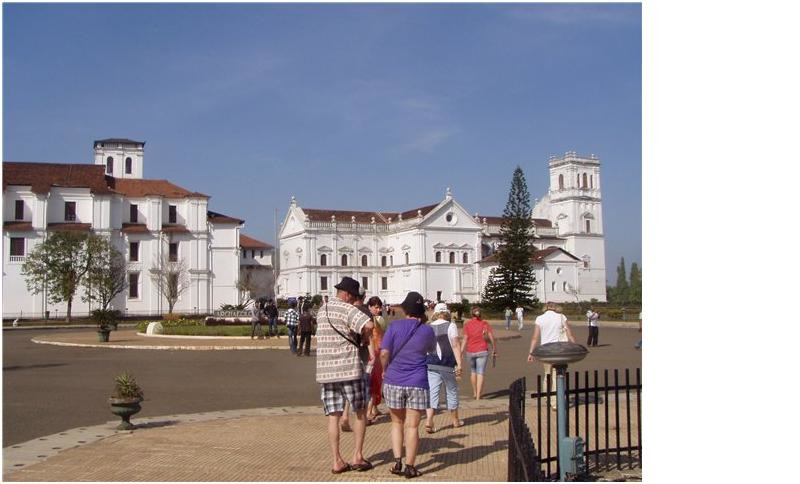
Planted in front of the Cathedral is quite unusual plants. Resembling something of our Christmas tree.
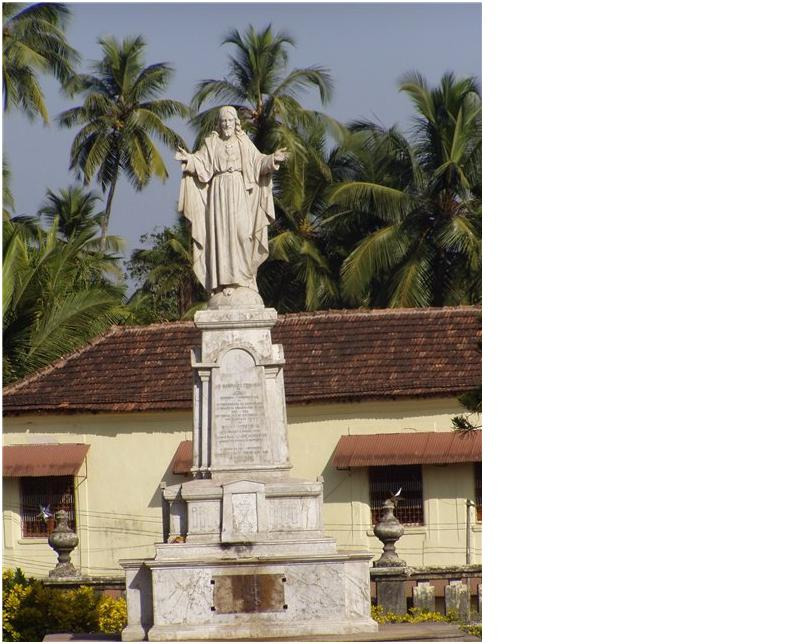
But our path lies in Panaja, one time we stop at one of the temples of old GOA.
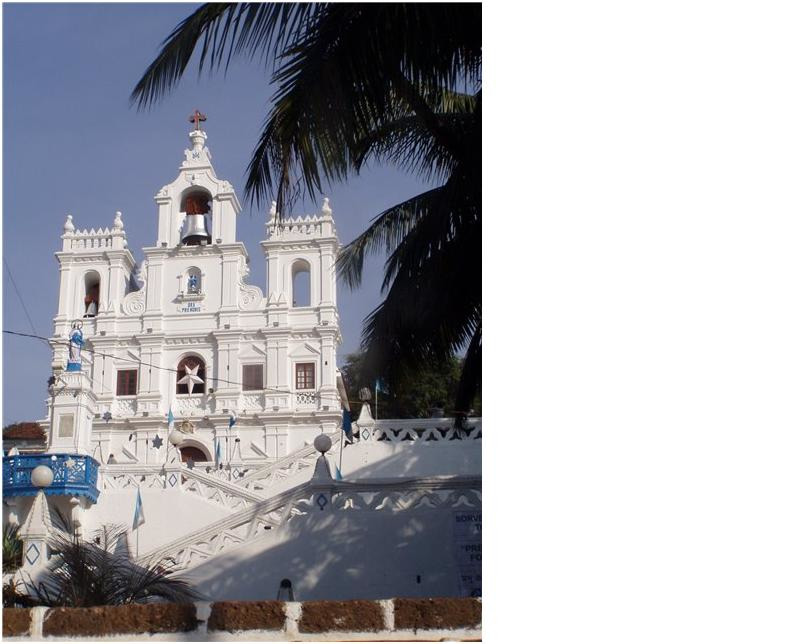
The scene in the courtyard of the temple, guanzi love to decorate their temples with scenes from lives of saints.
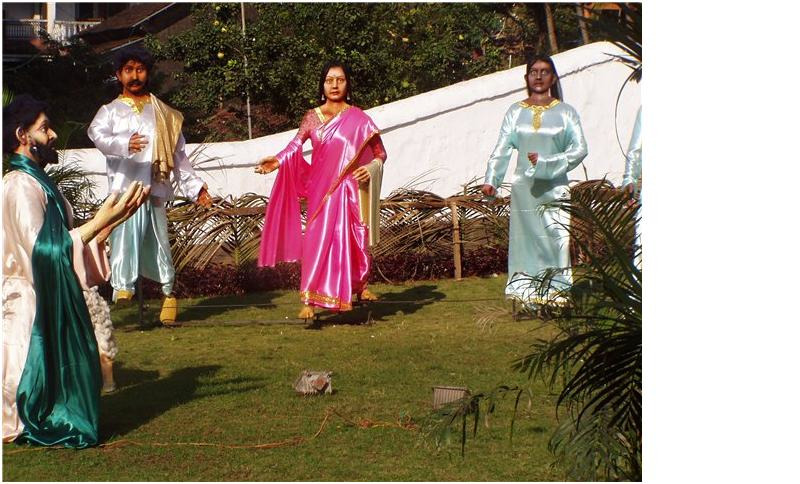
I must say that in GOA the most common religion is Hinduism, followed by Islam and Catholicism. But often on the same square you can see the next two or three temples belonging to different religions. All coexisted peacefully with each other, conflicts on this soil no. The temple Marupi in Panaji is the last in today’s tour. You can see some fragments of the temple and the city panorama.
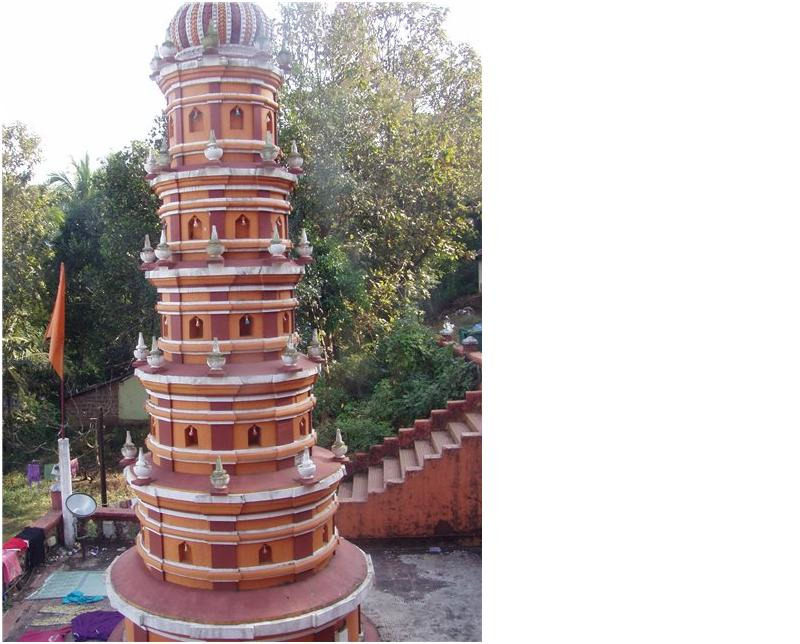
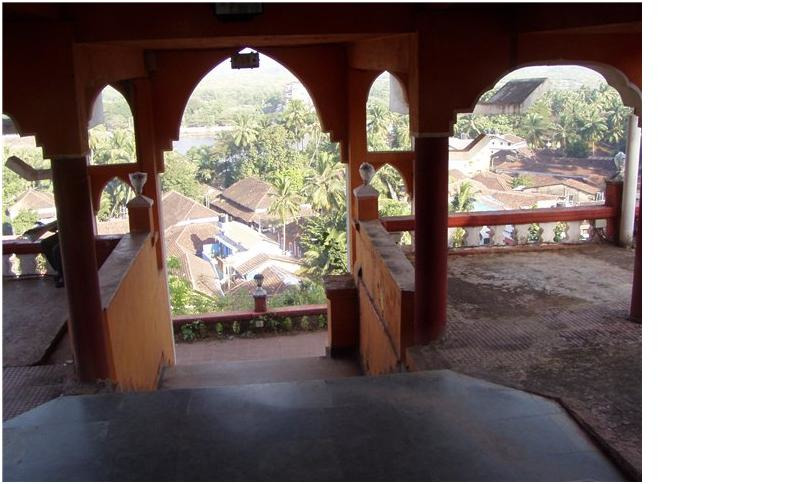
All I want to note that you cannot know the country until he starts to travel and communicate with local people. Yes, the guide will tell you many interesting stories about India and try to fit in your mind some idea about the country, but it will be his point of view, not yours. And that formed my view — don’t be afraid to travel alone. I ask the cafe owner Michael, with whom I dine every day, where I can go by myself. Write down on a piece of paper the names, the next morning I negotiated with a taxi driver and we start our travelling! I would call this trip – “Unknown to the churches of old GOA”.
We pass rice fields along the way. Rice is a main crop in India. It is grown everywhere. In the crop season some roads are just blocked — they dry the rice.
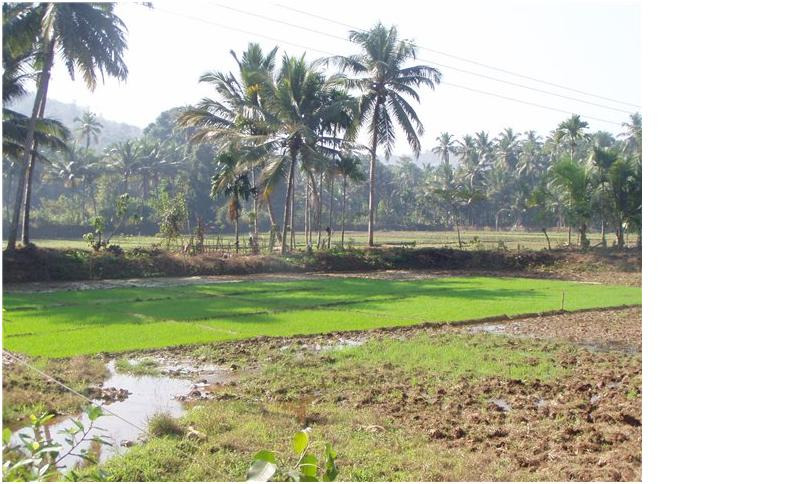
The first is a very beautiful temple, almost immediately after turning on the pond. I ask Rami to stop — I want to take a few pictures. The temple is opened, I buy a lotus flower and come inside the temple. Of course, I ask permission and make some photos for memory.
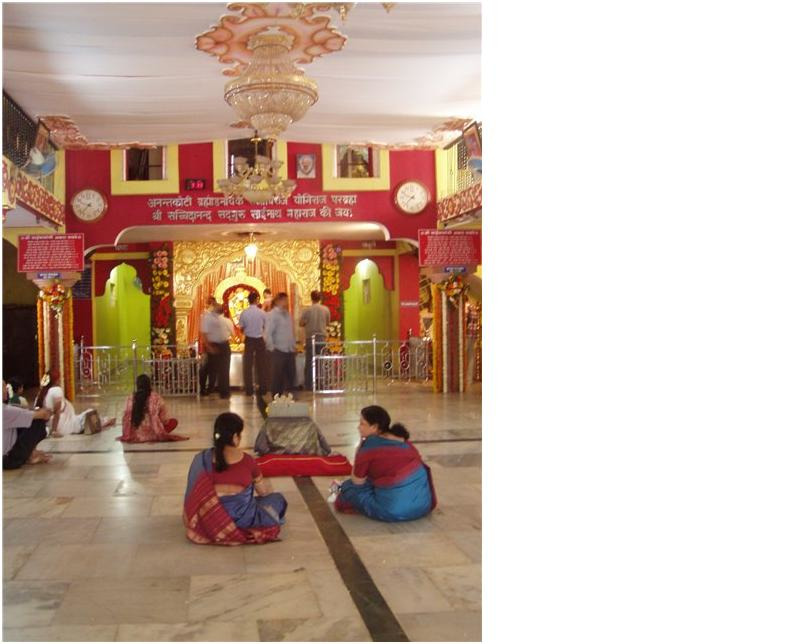
Let’s move on. I asked Rami about the life in GOA. He is a native resident of this state, so his stories can be trusted. He doesn’t lie to me. I ask him about the national cuisine, whether working girl after marriage, medicine and education. By the way in India free medicine, but be prepared that you will put on the rug in the hallway of the hospital because all the seats in the wards are occupied. A visit to a private doctor costs around 500—600 rupees, plus medicines which will prescribe the doctor and pay for the tests. It is clear that a doctor can go not everyone. GOA is considered a very good salary in 100—150 dollars ($1 about 52 rupees). Basically such salary for civil servants. After retirement after 55 years, civil servants receive a good pension. Very prestigious and well-paid service in the army (the whole army on a contract basis). Employees are provided with housing, a stable salary and is waiting for them in secured retirement. Mother put a lot of effort to have their son or daughter enlisted in the army (mainly serve sigchi, but there are exceptions). Time flies in talking!
Our next stop is already known to us about the temple of Mahalsa. Consider it without the hustle and bustle, which is a great advantage. Nearly every temple has a pond for ablutions. Cool pulls from the water.
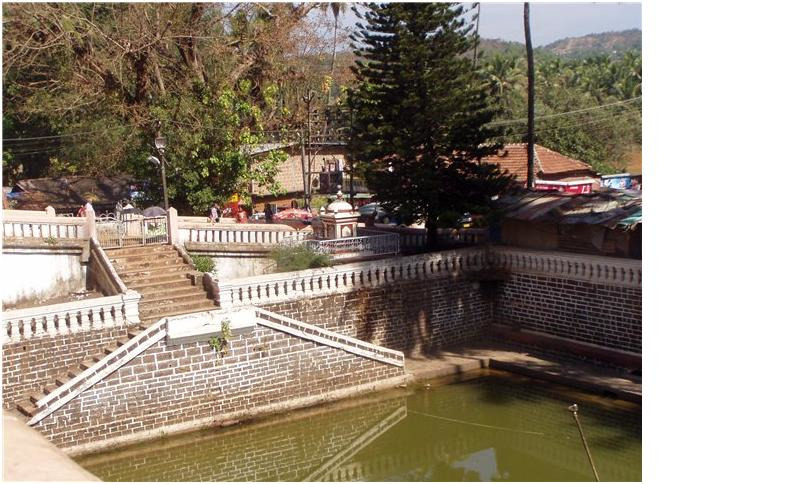
I leave my shoes at the entrance and go inside. There are special racks for shoes.
Today there are no tourists and you can safely explore everything. Unfortunately photography inside is forbidden, and I hide the camera in the bag. I see as the Indians bring gifts to the brahmin and he pours them into the hand of the Holy water. Or drink it, or pour it on his head as a sign of blessings received.
A little bit about the brahmin. The decision that the child became a brahmin, was adopted when he was only 8 years old. It comes to learning to the brahmin and he over the left shoulder was tied, the rope is the sign of a brahmin. Then there comes a time when a brahmin can get a family, after which he completely devoted himself to the service of God. The last, highest stage — seclusion, it comes not every brahmin. Outside the window flashed the familiar landscapes — rice fields, flooded with water, and a piece of real jungle.
Our goal is the temple in Mangochi. We stop at an abandoned temple. I’m getting out of the car and make photos for memory. A group of women sat down in the shade and vividly discussing something. We drive up to the temple Mangochi. Here tourists are not taken, but it is very famous among the indigenous population of GOA. Close proximity to a school. Students finished class, and they come to church, I go after them, looking around.
At the entrance to the temple, women traditionally sell fruits and flowers. Buy the lotus flower can’t resist and inhale the delicate fragrance of a newly blossomed flower! White buildings amaze with their greatness! We already know light tower A teacher took his class, and I make some pictures on the memory.
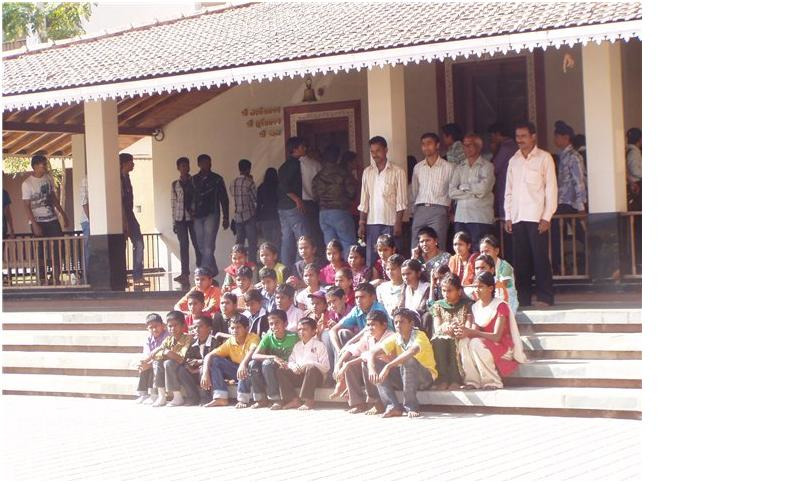
I see a big hanging bell at the entrance to the temple. You call him and warn God about his visit.
Flowers in shadow look like our hydrangea.
I put last look at the pond for ritual ablutions and come back.
The next trip is to the neighbouring state of Karnataka. Don’t try to go there ourselves by taxi. You will be stopped and asked to show the permission to enter (permitions). If you don’t have or they are wrong, you without further you will be deployed back. Our bus was checked three times, and each time the driver brandished an impressive stack of papers. A trip to the neighboring state is the same a trip to another country.
And now a little about the state. Karnataka is one of the most enlightened States. It in the middle of the last century has been recognized by the law issued by Gandhi, relatively untouchable. In India still remained the caste divisions. The highest is the brahmin, the lower untouchables. About the first I wrote earlier, a few words about the untouchables. According to legend, the people of this easty appeared from under the feet of Shiva — little black creatures crawled out from under the ground. From time immemorial they assigned the most dirty and hard work — assembling herbs for Pets, repairing roads, supplying firewood, cleaning of all sewage, and all this is done still manually. On the road time and again we see how roads are repaired — a group of people tetkami rubs the asphalt, digging ditches, the women walking along the road with huge bundles of firewood on the head, 30—40 kg — all untouchable. Until recently they were not allowed to settle in towns and villages, they have always lived separately. If you will see the “home” of the 3 poles, covered with a piece of plastic, you know — the untouchables live here. The name of the caste of “untouchables” speaks about what not to touch them because touching him would defile your karma and will require its purification. We leave very early — at 6 in the morning we climb on the bus and continue to sleep on the way. The first stop is for breakfast in the parking and there are a lot of pilgrims. Karnataka — the state of vegetarian, meat here hardly eat. We start our breakfast with samosas — potato balls with cashew nuts, dusted in rice flour and fried in oil. Then, we take the cake of rice flour with a sauce and for dessert something like our doughnut with a banana inside. Tasty and satisfying! Even we are very hungry it is not able to eat it all, and we pick up the remains of breakfast with you — we will need it in the city of sacred cows.
On the way, the guide tells us about the Indian gods. There are so many of them that by the end of the first hour we can hardly remember their names. When you consider that in India in every village in addition to the major gods has the local ones, so it is clear that to count all the gods it is impossible. Guide tell us very interesting legend about Shiva and his wife, the beautiful Parvati. Shiva was a very warlike person and the gods didn’t know how to control his temper. Finally someone came up with the idea to create a goddess and empower her with all possible gifts. Each of the gods gave Parvati the beautiful something — someone gave her beauty, someone mind, someone sweet nature. But Shiva passed by Parvati and not noticed the beauty. Then Kali rigged so that at their next meeting in Shiva got his arrow, and only then, Shiva saw Parvati and was struck by her beauty. Parvati is revered in India the same Shiva and people also bring her many gifts.
Siva with Parvati had two sons. Indians also have legends about each of them. The boy with the head of elephant (Ganesha)— real favorite of children and adults! The legend says that once Shiva went to do great things and Parvati has long been one. She got bored and she blinded his son. Time passed, and a regular cottage industry rebracketed high a handsome youth. As Toras Parvati was taking a bath, and it was at this point Shiva returned home. Seeing in the chambers of soysapura young man, Shiva became so angry and killed this man, and cut his head. When Parvati saw this, crying and moaning she rushed to Shiva: “You killed your own son!” Shiva realized his mistake, but to raise a son without a head, he could not. Seeing in the jungle grazing elephant, Shiva cut off his head, put the body of his son and raised him. So there is a new deity — Ganesha.
Brahma is the creator and ruler of the world, father of all gods and men; in classical Hinduism, it is included into the triad of Supreme gods along with Vishnu and Shiva. The Creator of the universe, he confronts Vishnu, who preserves it, and Shiva who destroys.
Shiva in Hindu mythology, one of the main gods, who, along with Vishnu and Brahma forms the divine triad — Trimurti. Shiva is the Creator God and the God of time and destruction, the God of fertility and at the same time God the ascetic.
Vishnu — in Hinduism one of the most important and most revered gods; together with Shiva and Brahma he was a divine triad, Trimurti: Vishnu, the preserver of the universe; majestic and terrible, but less formidable than Shiva. For interesting stories about life Logov time flies imperceptibly. We drive up to the majestic monument — the largest statue of Shiva. Its height is more than 38 meters, the statue inside the temple and opened the Museum.
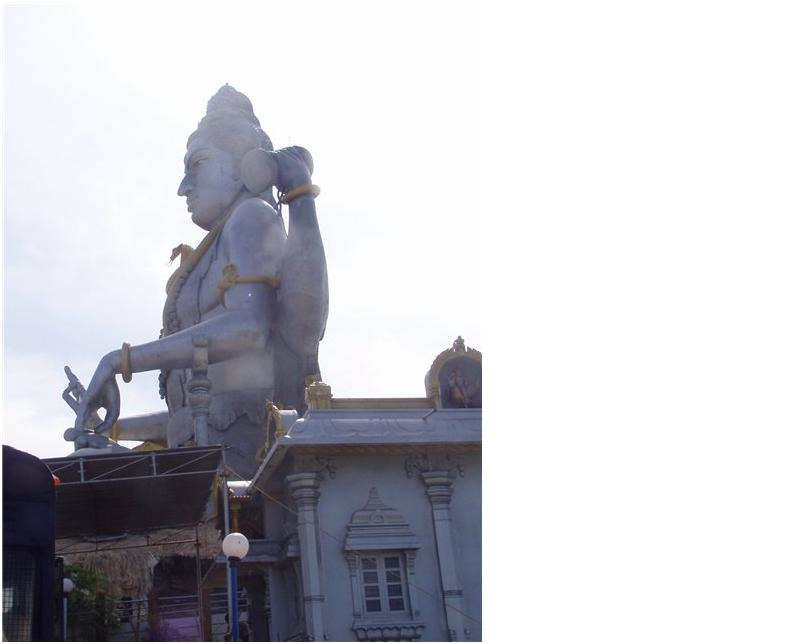
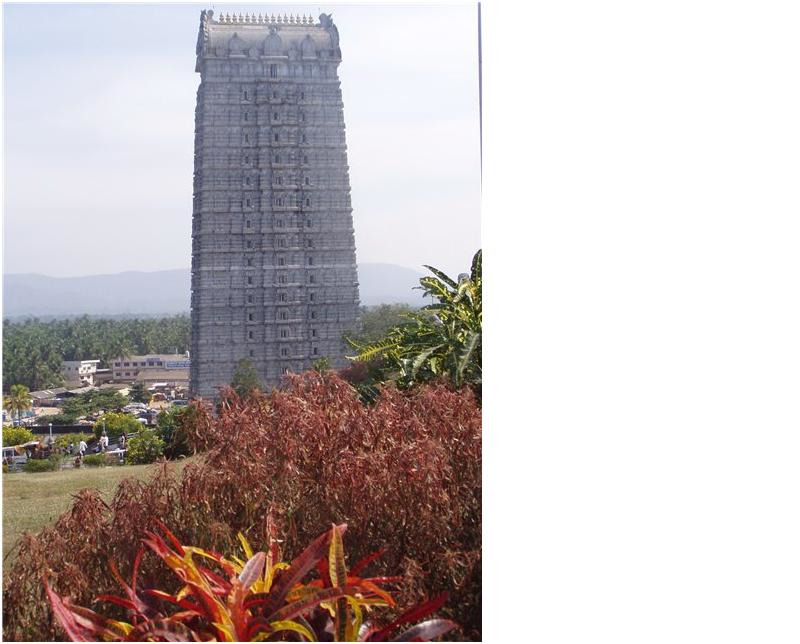
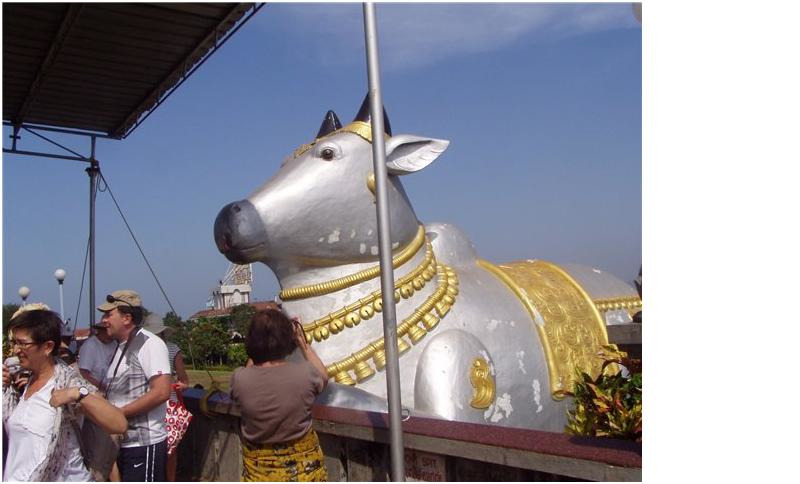
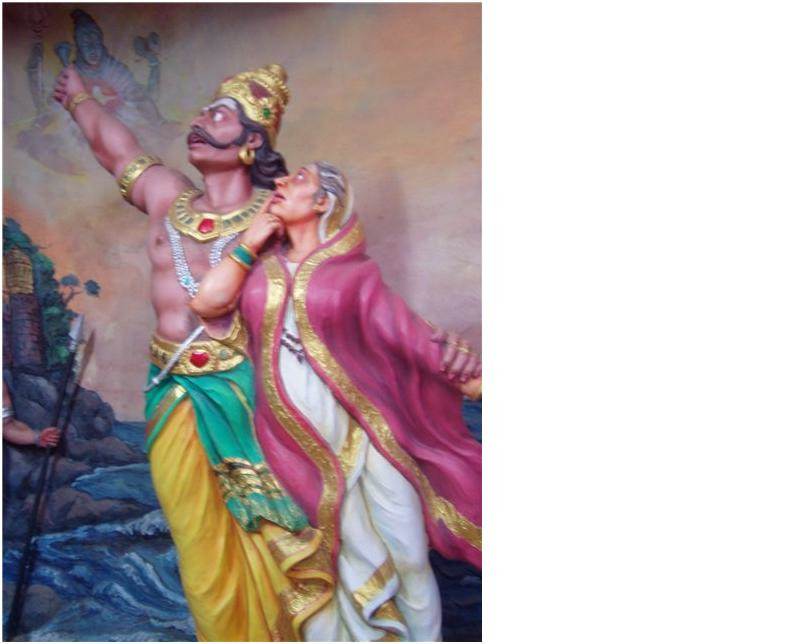
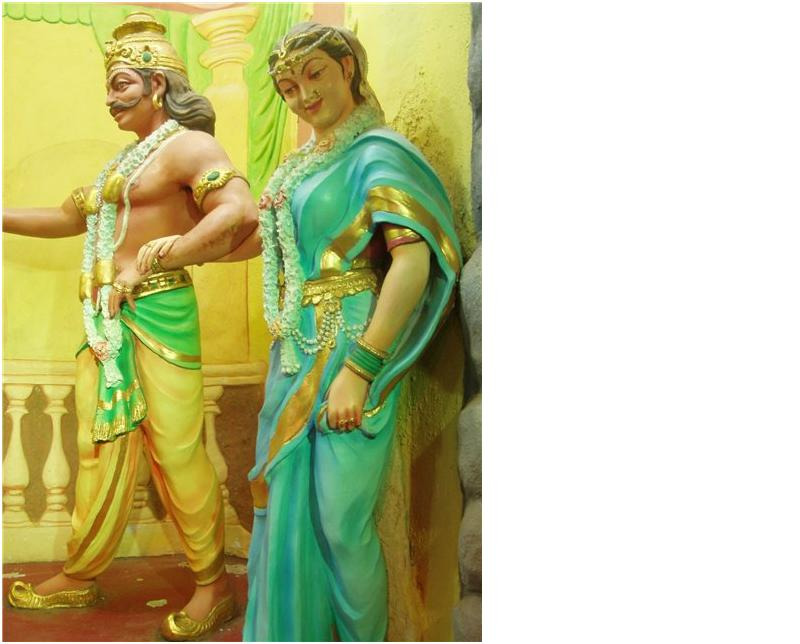
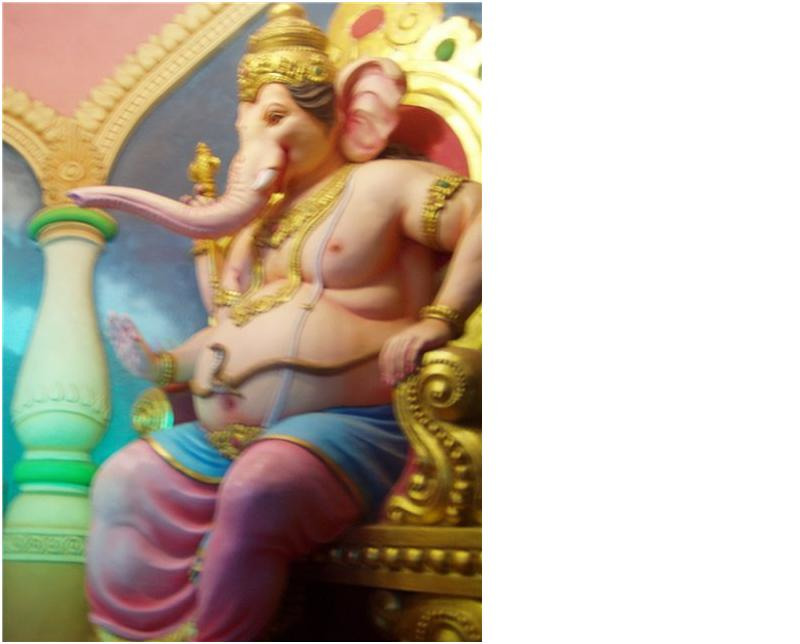
There is the temple at the foot of the monument. It is allowed to take photographs inside and I make a photograph of a brahmin.
Бесплатный фрагмент закончился.
Купите книгу, чтобы продолжить чтение.